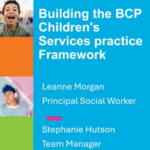Investment in tax credits and benefits needs to increase dramatically if the government is to succeed in its pledge to eradicate child poverty, campaigners have warned.
Following the announcement last week that the government has failed to meet its target to cut child poverty by a quarter by 2005, the left wing think tank the Institute for Public Policy Research argued that an extra £2bn a year would need to be invested if future targets were to be met. The government wants to halve child poverty by 2010 and eradicate it altogether by 2020.
Figures released by the Department of Work and Pensions show that, although 800,000 children have been helped out of poverty since 1997, this is still 300,000 fewer than the government was aiming for. Around 3.4 million children remain in a state of relative poverty, living in households with less than 60% of average income.
Children’s charities echoed the call for further investment. One Parent Families chief executive Chris Pond said: “Increasing investment in children really works, but too many children are still missing out. The 2006 Budget will be an opportunity for the government to show us what it will do to get us back on track.”
Kate Green, chief executive of the Child Poverty Action Group, added: “If Ministers are to meet the goal of halving child poverty by 2010, they must redouble their efforts and make much faster progress. We also call on the Conservatives and Liberal Democrats to sign up to the child poverty target and adopt policies that would help to meet it.”
Although the progress made so far has been welcomed, it has also been patchy and wide regional discrepancies in poverty levels remain. Children in inner London, for example, are twice as likely to be affected by low income as children in Scotland.
The figures show that children with disabilities or from black or Asian backgrounds are also far more likely to be living in relative poverty.



 Bournemouth, Christchurch and Poole
Bournemouth, Christchurch and Poole  Hampshire County Council
Hampshire County Council  Oxfordshire County Council
Oxfordshire County Council  South Gloucestershire Council
South Gloucestershire Council  Wokingham Borough Council
Wokingham Borough Council  Webinar: building a practice framework with the influence of practitioner voice
Webinar: building a practice framework with the influence of practitioner voice  ‘They don’t have to retell their story’: building long-lasting relationships with children and young people
‘They don’t have to retell their story’: building long-lasting relationships with children and young people  Podcast: returning to social work after becoming a first-time parent
Podcast: returning to social work after becoming a first-time parent  How managers are inspiring social workers to progress in their careers
How managers are inspiring social workers to progress in their careers  Workforce Insights – showcasing a selection of the sector’s top recruiters
Workforce Insights – showcasing a selection of the sector’s top recruiters 

 Facebook
Facebook X
X LinkedIn
LinkedIn Instagram
Instagram
Comments are closed.